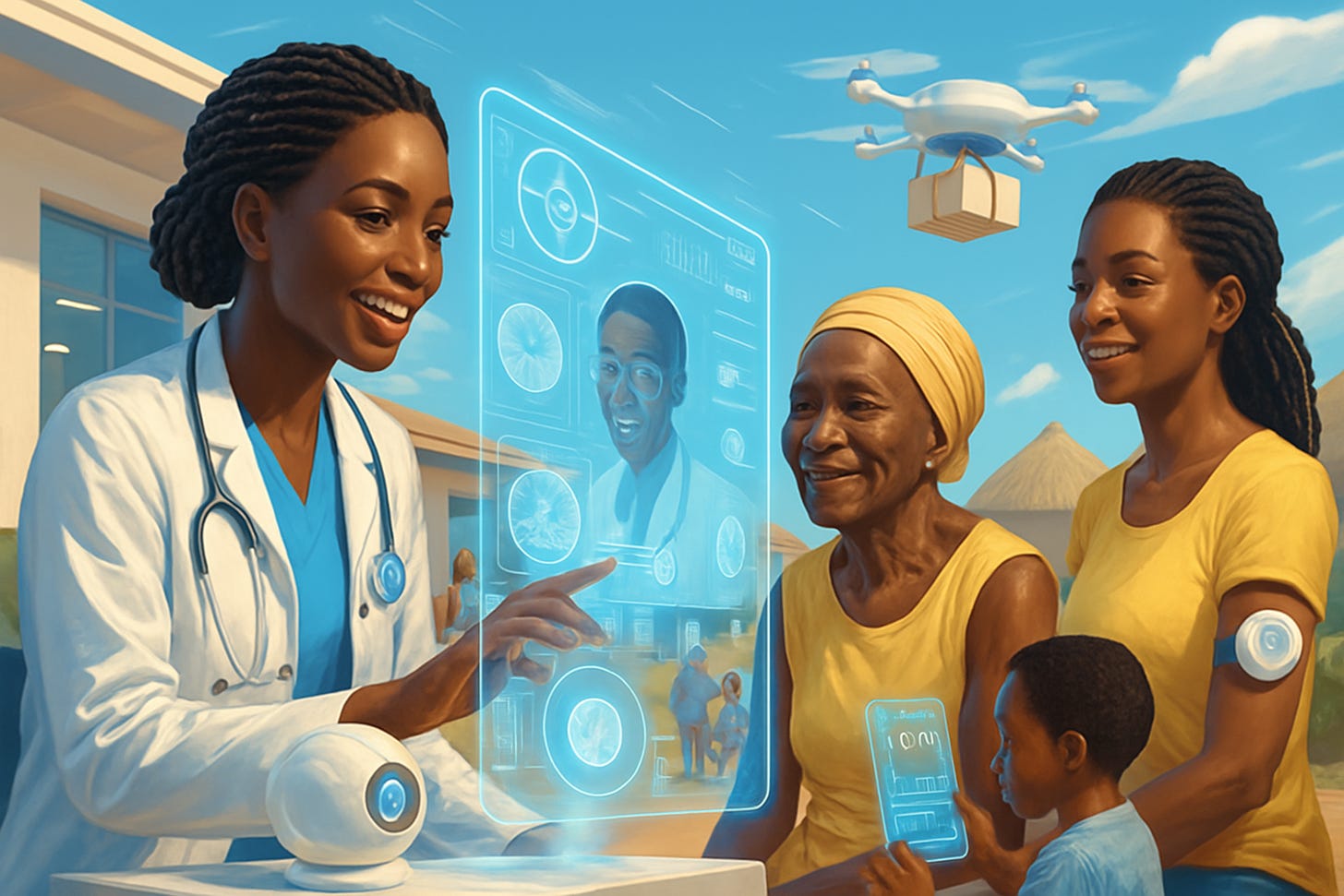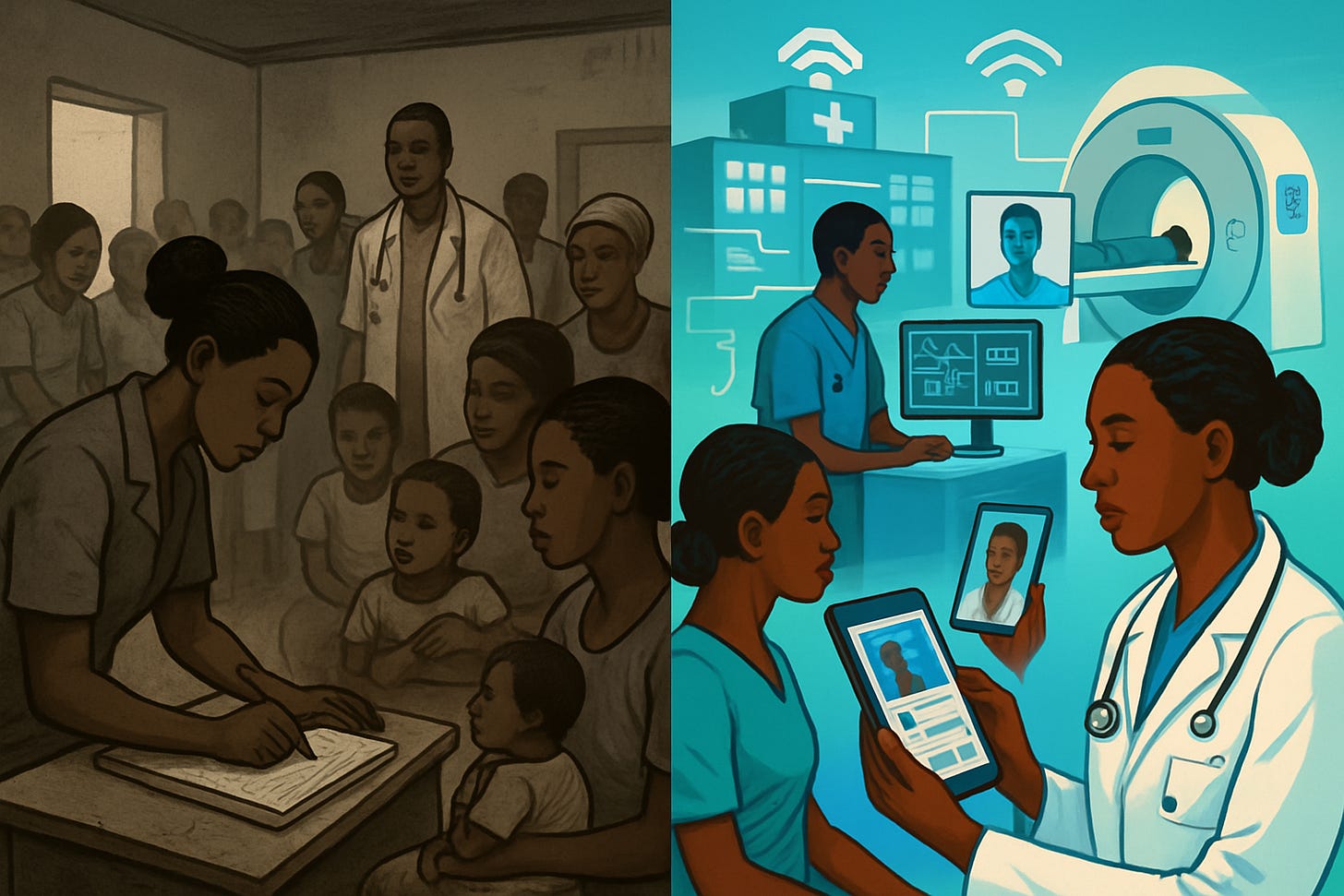The Impact of Health Infrastructure on Chronic Disease Management in Africa
The State of Health Infrastructure in Africa
Introduction
Chronic diseases like high blood pressure (hypertension), diabetes (blood sugar disorders), stroke, and heart disease are becoming more common in Africa. These conditions account for a large part of illness and deaths, but limitations in health infrastructure still hinder effective prevention, diagnosis, and treatment. Africa’s healthcare systems remain underfunded, understaffed, and poorly equipped, creating barriers to timely and quality care for people with chronic diseases.
This article examines the impact of Africa’s healthcare infrastructure—encompassing hospitals, clinics, digital health services, workforce capacity, and policy frameworks—on chronic disease outcomes, and suggests strategies for strengthening healthcare systems to better manage these diseases.
Shortage of Healthcare Facilities
o Africa has a shortage of hospitals and clinics, especially in rural and semi-urban regions.
o Many healthcare facilities do not have dedicated chronic disease units, leading to late diagnoses and poor disease management.
o Patients frequently travel long distances to access essential diagnostic and treatment services, which can postpone needed interventions.
Inadequate Medical Equipment & Technology
o Many healthcare facilities do not have essential diagnostic tools, such as blood pressure monitors, glucose meters, and ECG machines.
o Limited lab facilities impede early screening for diabetes, hypertension, and cardiovascular diseases.
o The lack of digitized patient records results in disorganized care, misdiagnoses, and fragmented treatment.
Insufficient Healthcare Workforce
o Africa faces a severe shortage of medical professionals, specialists, and trained nurses.
o The doctor-to-patient ratio is alarmingly low, with some countries having fewer than one doctor for every 5,000 people.
o Overworked and underpaid healthcare workers struggle to provide continuous and personalized care for managing chronic diseases.
Limited Access to Medications & Treatment
o Essential medications for hypertension, diabetes, and heart disease remain out of reach or unavailable in many regions.
o Weak pharmaceutical supply chains frequently cause stockouts of life-saving medications.
o High out-of-pocket expenses hinder patients from sticking to long-term treatment plans.
The Impact of Weak Health Infrastructure on Chronic Diseases
Delayed Diagnosis & Late-Stage Interventions
o Many patients are diagnosed only after suffering serious complications such as stroke, kidney failure, or heart attacks.
o The absence of preventive screening programs leads to diseases often remaining undetected until irreversible damage has already taken place.
Poor Disease Management & Increased Complications
o Limited follow-up care and monitoring increase the risk of disease progression.
o Uncontrolled hypertension and diabetes raise the risk of stroke, heart attacks, and amputations.
o Patients often struggle with limited access to healthcare professionals, which makes self-management difficult.
Higher Mortality Rates & Economic Burden
o Poor health infrastructure leads to higher death rates from chronic diseases.
o Rising hospitalization and emergency care costs create financial strain on families and governments.
o Productivity losses from absenteeism due to chronic illnesses affect economic growth and the national GDP.
Strengthening Health Infrastructure for Better Chronic Disease Management
Expanding Healthcare Facilities
o Governments should invest more in building hospitals and clinics, especially in underserved communities.
o Creating specialized centers for chronic diseases ensures patients receive expert care.
o Mobile health clinics provide screening and primary care in remote areas.
Improving Medical Equipment & Technology Integration
o Investing in modern diagnostic tools improves the early detection of chronic diseases.
o Electronic Health Records (EHRs) enhance patient management and maintain continuity of care.
o Telemedicine platforms allow patients to consult specialists remotely, reducing the need for in-person hospital visits.
Increasing Healthcare Workforce & Training
Expanding medical training programs will increase the number of healthcare professionals specializing in the care of chronic diseases.
Governments and private organizations should offer incentives to motivate doctors and nurses to serve in rural areas.
Continuous medical education programs help healthcare professionals stay updated with the latest disease management protocols.
Ensuring Access to Affordable Medications & Treatment
Governments should offer subsidies for medications for chronic illnesses to reduce costs for patients.
Bolstering local pharmaceutical production reduces dependence on expensive imported medications.
Policies should encourage public-private partnerships to expand access to essential medicines.
The Role of Technology in Strengthening Health Infrastructure
Digital Health & Remote Monitoring
Wearable health devices help track blood pressure, glucose levels, and heart health in real time.
AI-powered diagnostics enhance early detection and tailored treatment plans.
Digital health apps offer medication reminders, lifestyle advice, and virtual consultations.
Telemedicine for Chronic Disease Management
Telehealth decreases hospital crowding and enhances access to specialists.
Mobile telehealth services and AI-powered chatbots offer health guidance to patients in remote areas.
Virtual support groups help patients manage their conditions through peer interactions.
AI & Big Data for Predictive Healthcare
AI-powered analytics can identify high-risk patients, enabling targeted interventions.
Data integration supports trend analysis and strategic planning for chronic disease management.
AI helps improve healthcare resource allocation to increase impact.
Policy & Investment Strategies for Health Infrastructure Development
Government Investment in Public Health
Increasing healthcare budget allocations to prioritize chronic disease management.
Developing national screening programs to enhance early detection rates.
Implement universal healthcare coverage to provide affordable care for chronic diseases.
Public-Private Partnerships (PPPs)
Partnering with private sector investors and NGOs to build healthcare infrastructure.
Encouraging corporate social responsibility (CSR) initiatives in healthcare development.
Leveraging international funding and grants to improve medical facilities.
Strengthening Health Insurance Systems
Expanding health insurance coverage for chronic diseases reduces out-of-pocket expenses.
Value-based insurance models reward preventive care and early interventions.
Micro-insurance plans ensure affordable healthcare for low-income populations.
Join Us – We are Open for Investment & Partnerships
We're raising our Pre-Seed round and seeking strategic partnerships with:
🏥 Healthcare providers and hospital networks
👨🏾⚕️ Doctors looking to modernize their patient care
🛡 Insurance firms seeking smarter claims and risk management
🌍 Investors passionate about health equity, AI, and Africa’s future
Let us build the infrastructure for a healthier, wealthier Africa — together.
· 📩 DM us to schedule a conversation
· 🌐 Learn more: https://www.medlitics.com



